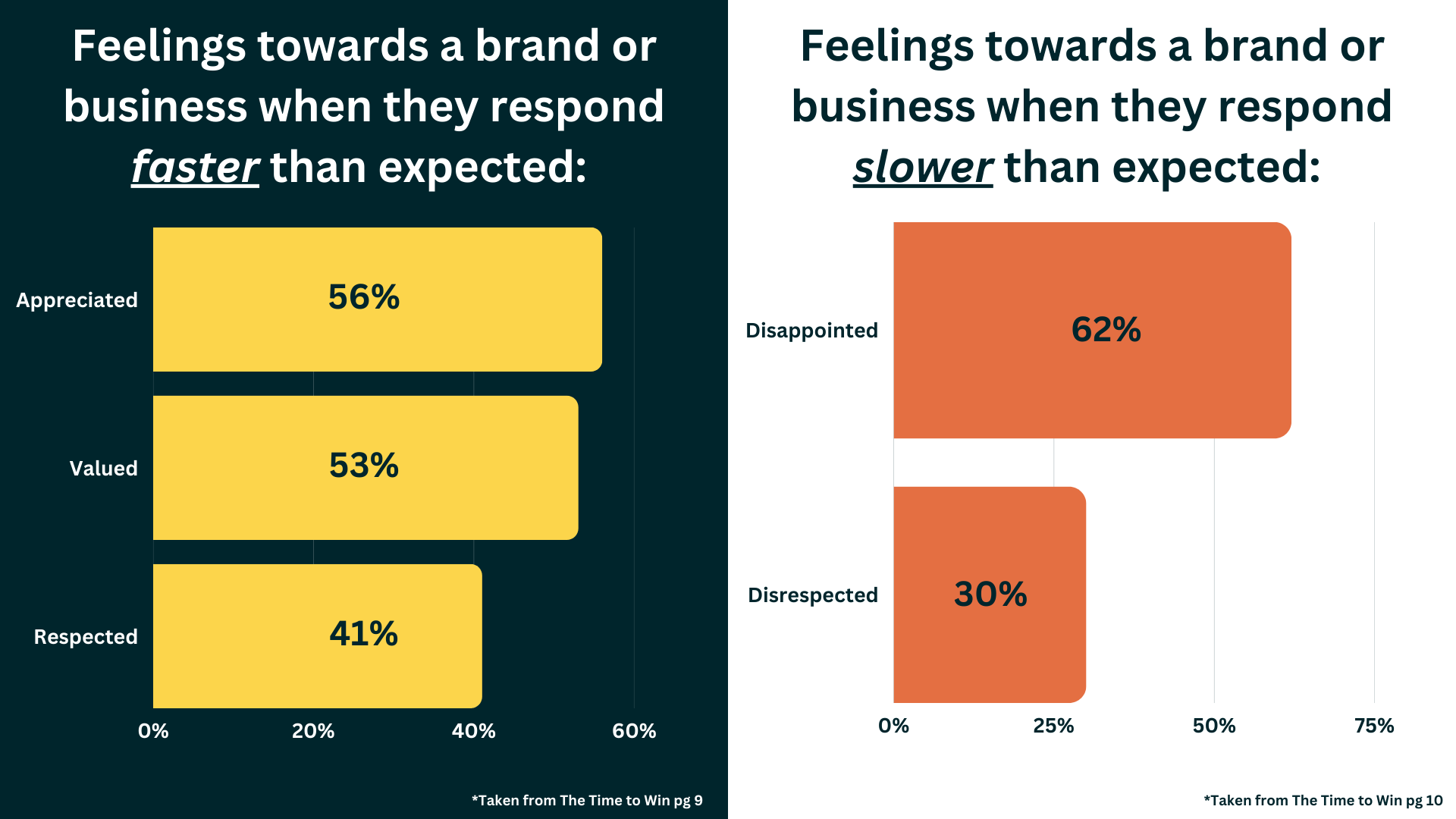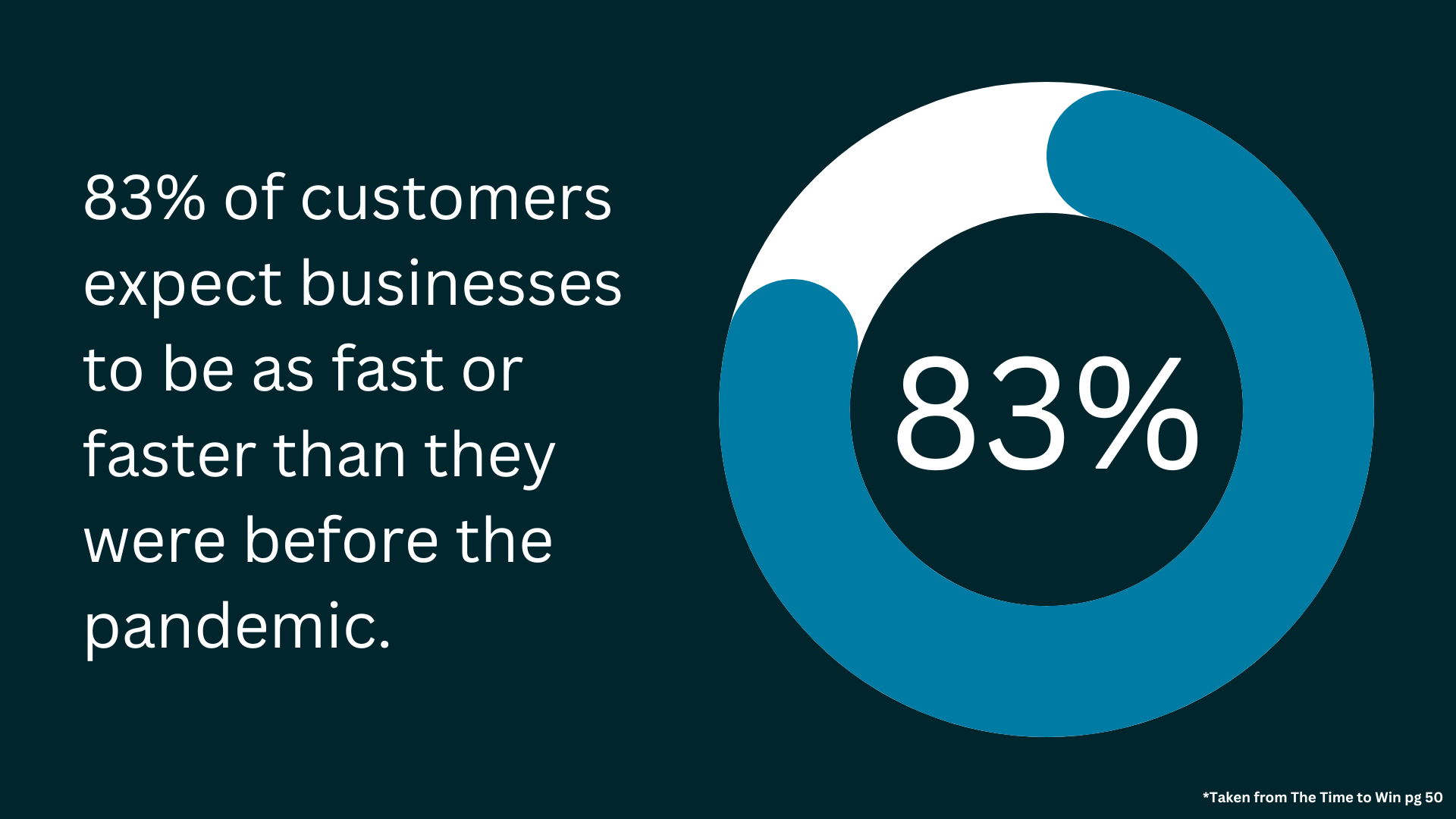Here’s a question: what do Oprah Winfrey, The Governor of Wyoming, and someone living in your government organization’s service area have in common?
Time.
24 hours. 1,440 minutes. 86,400 seconds. No matter who you are, where you live, or what you do, we all share the same amount of time each day.
Since the COVID-19 pandemic, we have all become cognizant of just how special time is, and much more aware of how we choose to spend it.
I recently had the privilege of receiving an advanced copy of author, speaker, and marketer extraordinaire, Jay Baer’s newest book: “The Time to Win: How to Exceed Your Customers’ Need for Speed.“
In this book, and the accompanying research, Jay lays out just how important speed and responsiveness are in the eyes of our customers and provides a 6-piece framework to delight our customers with speed. Turning it into a true competitive advantage.
But, before we get into the framework let’s talk about speed, trust, and government.
In the book, Jay states, ” Today, we interpret speed as caring.” (Speed = Caring)
I would argue that we could even take it a step further.
Speed = Caring = Trust

If I were ever asked for one area that I think government as a whole could improve on the most. It would be speed. Government organizations are notoriously slow.
A lot of this is due to how cities, counties, and states operate, but this noticeable lack of speed in nearly everything we do (including customer experience) is harming our reputation.
In the latest Edelman Trust Barometer report government was not held in high regard.
Stats like these fill the report:
– Only 42% of U.S. citizens trust their government
– Only 39% of people say that the government is a reliable source of trustworthy information
– Only 33% of people view government leaders as a unifying force that brings people together
– Only 41% of people trust their government leaders
Now, I know what you’re thinking. “I’m just a one-person team trying to get by while wearing a half dozen hats.” Or, “I work for a government organization I don’t have the resources to increase my speed and responsiveness.”
Stay with me.
Don’t worry.
Remember Jay’s 6-piece framework I mentioned earlier? Let’s discuss that now!
The Time to Win Framework
#1 Perform A Got It Audit
In this step, you’ll need to roll up your sleeves and do a little work. You’ll want to get your stopwatches ready as you answer this question: How long does it take for your customers to . . ?
Get a question answered?
Pay their bill?
Set up a new service?
Only when you ACTUALLY know how long it takes for your customers to get the answers they seek can you begin to improve.
#2 Answer Before They Ask
The best way to reduce customer response time? Answer their questions in advance!
In this section of the book, Jay suggests the following exercise:
- Grab a pen and paper
- Write down the 25 most common questions your organization gets asked on a regular basis
- Go to your website and see how many of those questions you can answer in just two clicks
Organizations rarely achieve more than seven!
We need to have an easy-to-navigate and well-maintained FAQ page.
BONUS TIP: Include answers to your organization’s most asked questions on your social media profiles, in your content, and everywhere that makes sense.
#3 Respond Without Answers
As government communicators, we get asked a lot of questions and these questions often span a wide variety of subjects. On any given day we get asked questions we do not have the answers to. We scour our organization’s website, ask leadership internally, or reach out to our partners for answers.
All the while, often leaving the inquirer in the dark waiting and wondering until we finally find the answer.
Don’t go about it this way.
Jay states, “The best way to handle questions from customers, prospects, colleagues, friends, spouses, children, and beyond is to immediately reply.”
“That’s a good question. So good in fact, I don’t know the answer. But, I’m going to find out. And I’ll let you know soon.”
Getting in the habit of responding before you have all the answers can eliminate the uncertainty, anxiety, and angst your customers feel while waiting for answers to their questions.
#4 Set Speed Expectations

Customer Experience = Expectations – Reality
Do your customers know what to expect from you? For example, are you monitoring your organization’s chat, social profiles, or phones outside operating hours? What about federal and state holidays?
Clearly and openly set your speed and responsiveness expectations beforehand. Underpromising and over-delivering can be your organization’s secret weapon to increasing customer satisfaction.
#5 Close Uncertainty Gaps
Jay describes uncertainty gaps as, “The difference between what you know about your organization and how it operates, and what the customer knows.”
In case you weren’t aware, There are A LOT of uncertainty gaps in government!
“Should my rebate be taking this long to get to me?”
“How many forms of verification do I need?”
“What are my property taxes used for?”
“Where does my water come from?”
The list goes on and on.
Customers have been conditioned in recent years to expect status updates with everything and despise uncertainty gaps.
Perhaps we don’t have the money, talent, or resources in government to implement a rebate tracker (similar to the Domino’s Pizza Tracker) or have a sleek app that shows in real time where our garbage service is currently so that your citizens can get their cans out to the curb in time (similar to Uber or Lyft).
But, we do know more than our customers. How can we share some of that knowledge and insight about our organizations with them?
#6 Offer a Fast Pass
This last step in the framework perhaps is a little trickier for government organizations to navigate as we are inherently not-for-profit.
In short, 1 in 4 people are willing to pay more to not have to wait.
Think HOV or toll roads, Genie+ pass, etc.
A great example of a government entity offering a fast pass is the Transport Security Administration (TSA).
If you’ve traveled by plane recently then you should be well aware of the lines and wait times that can occur at security. The TSA PreCheck service is the organization’s fast pass. Pay an additional fee, you wait less in the security line.
Where could your organization offer the added benefit of a fast pass to its customers?
If you walk away with one thing from this blog post today remember this:
Speed = Caring = Trust
In today’s world, that makes all the difference.
Could actively working on speed and responsiveness within our government organizations help restore the public’s trust in our agencies once more?
I highly recommend checking out Jay Baer’s newest book, “The Time to Win” and his accompanying research. Because it truly is the time to win, especially for government organizations.
ZACK’S FACTS
Subscribe to “The Zack’s Facts” newsletter for my monthly take on the latest industry topics, a government account spotlight, and resources for you to become a better government communitcator.
